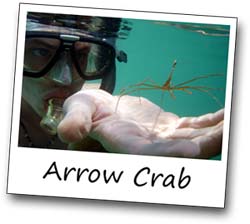The Belize Barrier Reef
"The Most Remarkable Reef in the West Indies"

Charles Darwin referred to the Belize Barrier Reef in 1842. The Belize Barrier Reef is the largest barrier reef in the Western Hemisphere and the second longest barrier reef in the world. Only Australia's Great Barrier Reef is longer. It is home to hundreds of species of tropical fish, thousands of species of marine invertebrates and located only half a mile from the tranquil beaches in the small fishing village of Hopkins. Miles of staghorn and elkhorn coral tower above the sea floor while nurse sharks and southern stingrays swim below the turquoise water. Barrel sponges, lobsters, nurse sharks, upside-down jellyfish, resident loggerhead turtles, stingrays and manatee sittings are almost a guarantee. Belize is home to one of the healthiest reef systems in the entire Caribbean. Healthy marine ecosystems are critical to the safety and welfare of the majority of the human population. Be prepared for a once in a lifetime adventure to the heart of the Caribbean!
Studying Marine Biology in Belize
Students are required to register for BIO 208 (Marine Biology, 2 credits) while non-student participants (individuals who are interested in the trip but do not need college credit) will register through the International Community Education program. All students will need a valid U.S. passport. To learn about an upcoming study abroad opportunity to Belize, please contact Professor Cox by email at or by phone at 217-786-4909.
Sample Itinerary
Day 1
Our day will begin with an early morning departure from St. Louis, flying to Dallas Texas before arriving in Belize by mid-afternoon. Once in Belize we will take a boat out to Calabash Caye where we will be spending our week.

Day 2
Wake up to watch the sunrise over the blue Caribbean waters. After breakfast, we will snorkel right off of the caye in the turtle grass beds. This will give us a chance to get acclimated to our surroundings while providing us with ample opportunity to see hundreds of different marine species. The afternoon will take us to a new snorkel stop which will have a new variety of marine life to explore. After snorkeling all day, we will return to the caye in time to watch the sunset over the horizon.
Day 3
Once again we will head out to explore the fascinating mysteries of the reef. Today we will explore the reef area where Loggerhead sea turtle sightings are common. During the afternoon we will go on a beach walk to investigate the various species that live on the beaches. At night, we may go on a night seining to study the nocturnal marine life.
Day 4
Today we will head out to Half Moon Caye, the site of the famous Blue Hole National monument. The Blue Hole was made famous by Jacques Cousteau. This area is home to hundreds of marine species that can be observed in a single glance. Various species of sharks and rays are known to frequent this area.
Day 5
This morning we head to the mangroves to explore the biome in which the majority of marine species get their start. Here we are likely to encounter giant starfish, upside-down jellyfish as well as thousands of species of juvenile fish. The mangroves are also known for their abundance of invertebrates and the mysterious batfish.
Day 6
Today is our last day to collect a few more rays of Caribbean sunshine before we pack our bags, say goodbye to our hosts and get ready to come home.
